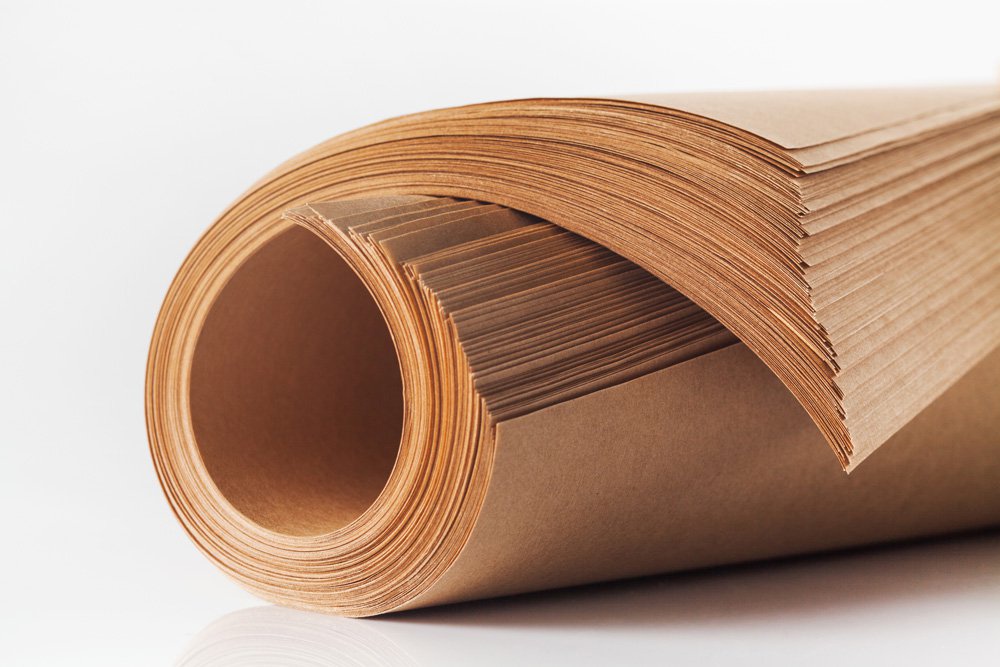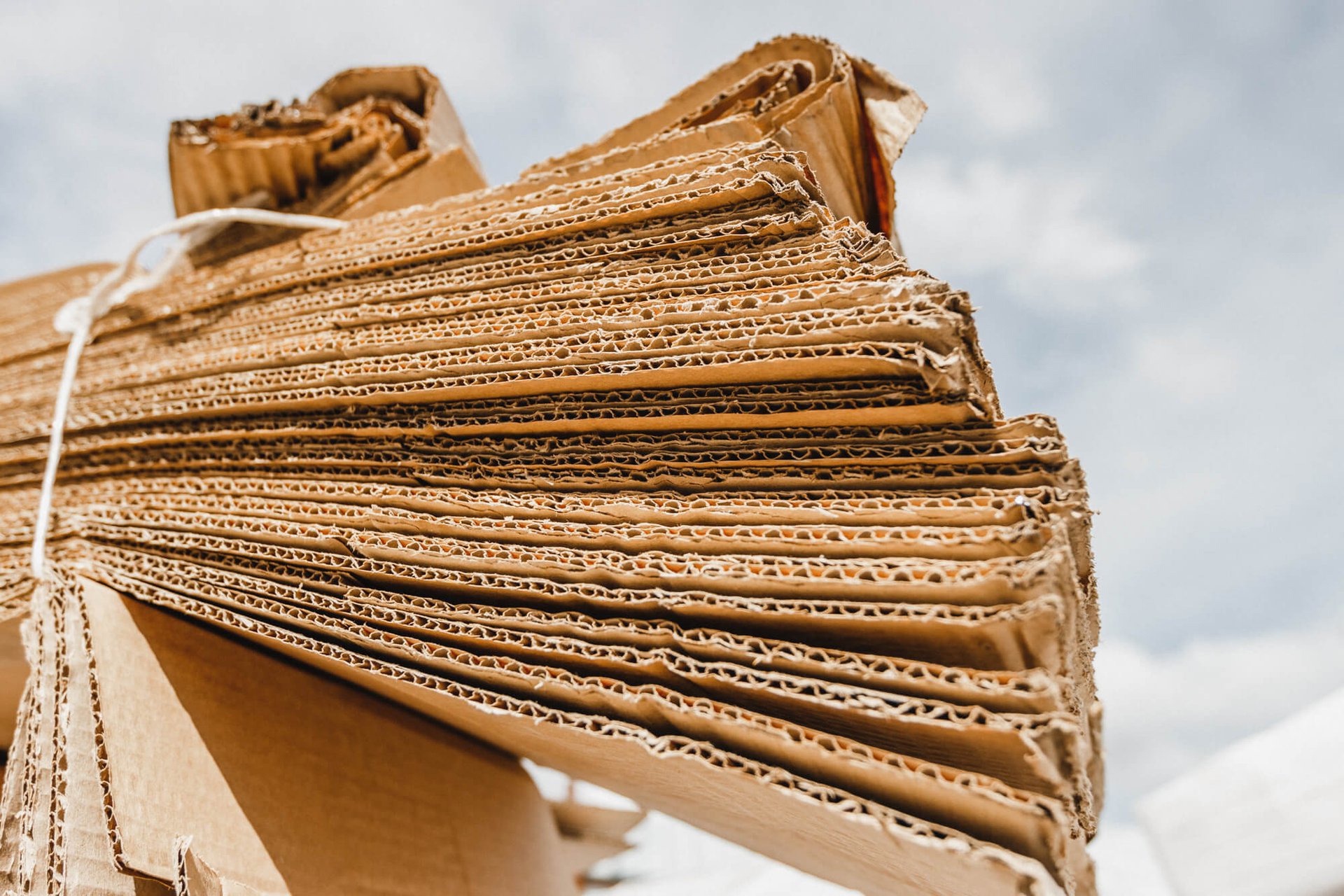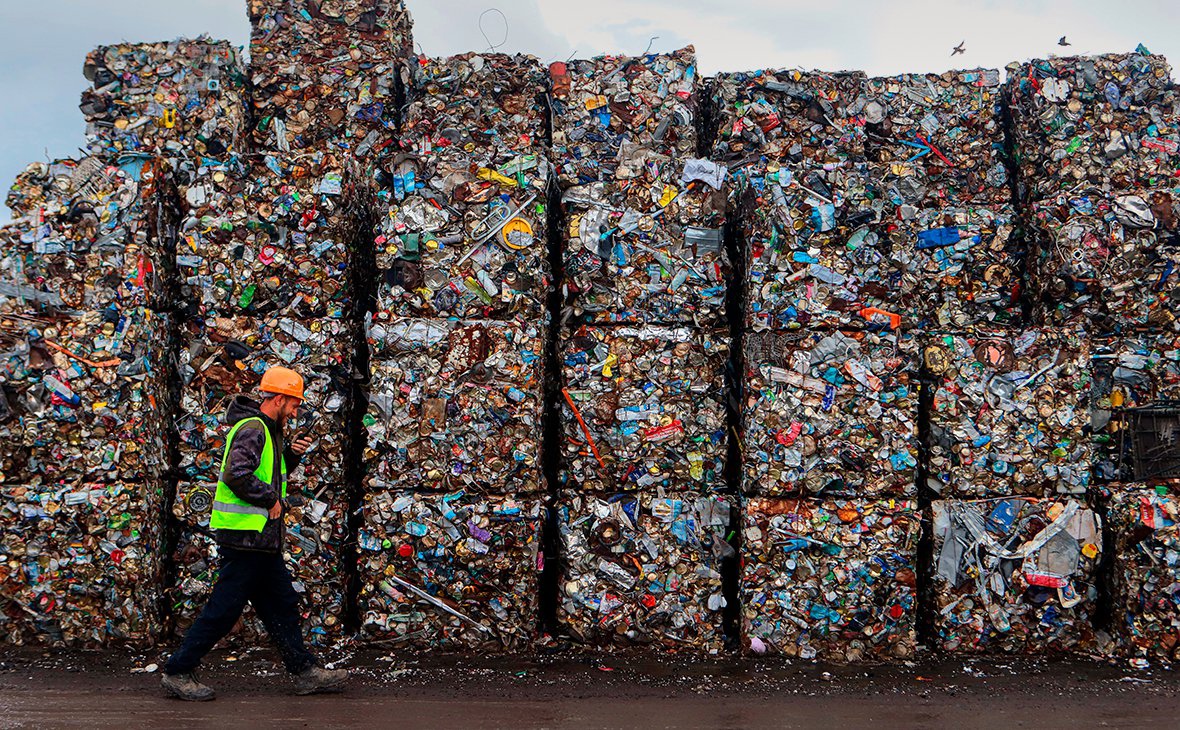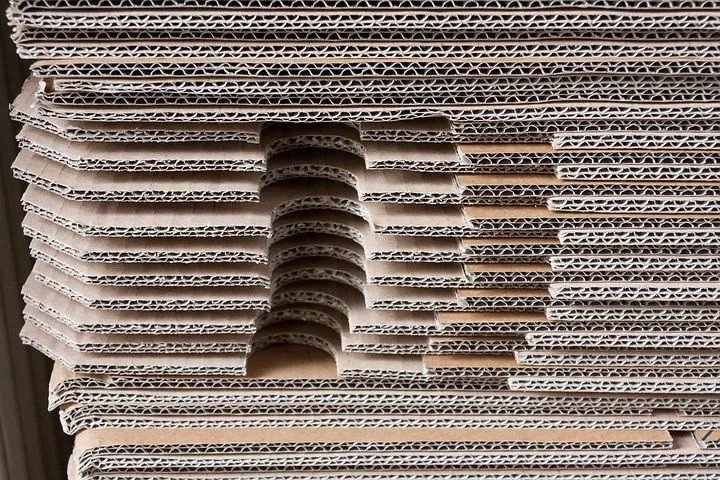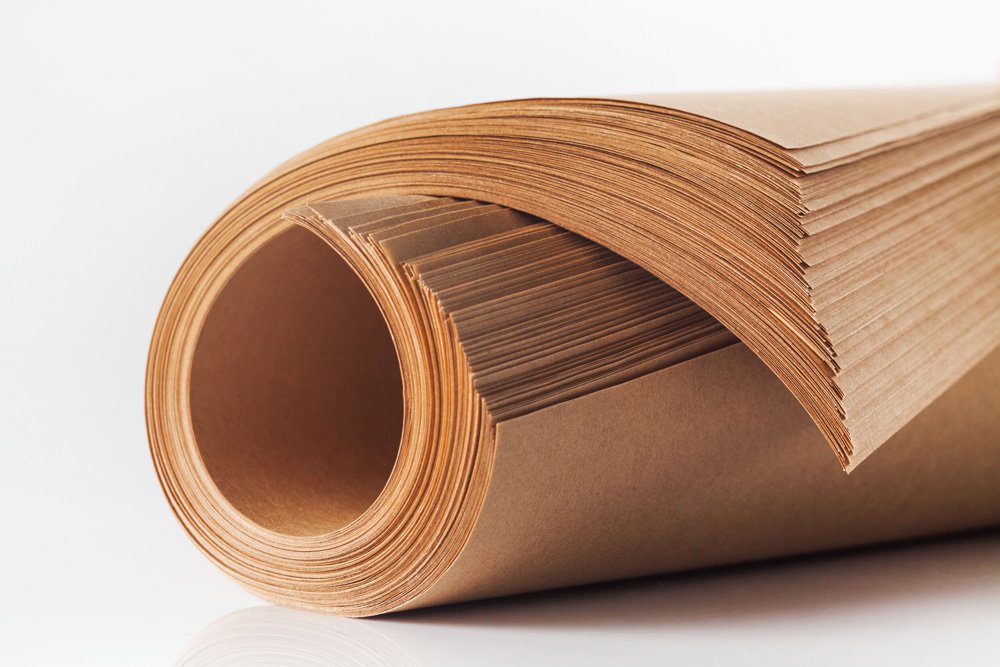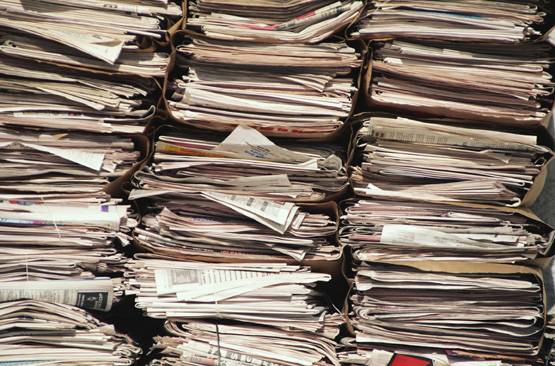252
15 December 2021
The program for increasing the circularity in the pulp and paper industry
The pulp and paper industry (PPI) is leading in the Russian economy regarding circularity. The level of recycling of paper and cardboard waste is over 60%.
The country generates up to 8 million tons of paper and cardboard waste annually. Of these, about 700 thousand tons are unsuitable for recycling: this includes sanitary and hygienic paper products, which finally lose their properties when used, and building and finishing materials based on paper and cardboard, which are disposed of as waste from construction and repair.
More than 7 million tons of waste paper annually is suitable for processing. However, the collection covers less than four and a half million tons of waste paper.
Collected mainly waste paper generated in the commercial segment. These include:
Producers of paper and cardboard, manufacturers of packaging, and other paper and cardboard products.
Waste paper here is represented by waste and manufacturing defects.
Retail trade, primarily network retail.
Retailers accumulate and sell packaging waste.
Commercial real estate, primarily office centers, utilizes ancient documents and other paper waste.
The commercial segment collects almost all of the resulting waste paper. At the same time, the main volume of paper and cardboard waste generated in households falls into municipal solid waste. After contact with organic waste, paper, and cardboard become unsuitable for recycling and are sent for disposal at MSW landfills. In this way, almost 3 million tons of valuable raw materials are lost annually. This state of affairs is due to the imperfection of legislation and the poor infrastructure development for procuring secondary raw materials in the household segment.
The primary means of increasing the cyclicality of the economy as a whole is the mechanism of extended producer responsibility, which assumes the responsibility of producers and importers of goods and packaging for the disposal of manufactured or imported products. Although the ROP mechanism has been formally operating in Russia since 2015, in 2019, lawmakers recognized its inefficiency.
At the end of 2020, the Government adopted the Concept for Improving the RBA Mechanism, which revised the fundamental elements of the RBA. Thus, the packaging of goods is separated into a separate regulations. Regarding packaging, the use of "recycling standards" is excluded. This means that manufacturers and importers are obliged to ensure that the entire volume of packaging is recycled. The number of ways to fulfill the EPR has been reduced: the subjects of the EPR either independently ensure the disposal of goods and packaging or pay an environmental fee.
The total volume of receipts of the environmental fee for packaging and other paper and cardboard products is estimated at 20 billion rubles annually. Of these, waste paper processors can claim an amount of about 12.6 billion rubles: 3,000 rubles of environmental fee for 4.2 million tons of recycled paper and cardboard waste. Accordingly, 7.4 billion rubles can be allocated annually to develop waste paper procurement infrastructure.
The infrastructure for handling paper and cardboard waste in the country has been created. It includes regional operators for treating MSW, production and procurement enterprises, and waste paper processors.
To increase the volume and improve the efficiency of paper and cardboard waste collection, it is necessary to improve the existing infrastructure in the following areas:
Allocation of separate containers for collecting paper and cardboard waste;
Organization of sorting of paper and cardboard waste at the collection enterprises;
Organization of the production of RDF fuel from paper and wood waste at the facilities of the collectors or pulp and paper enterprises.
The role of regional operators in improving the infrastructure is minimal. They will certainly be required to organize waste paper and cardboard delivery to the BAR. Both regional operators and collectors of paper can perform procurement and installation of additional containers. Even if there is no increase in waste paper collection, waste paper containers can be used to accumulate other types of recyclable waste.
Sorting of paper and cardboard waste is organized at the operating paper collectors, the allocation of separate production sites for the organization of sorting is optional. Similarly, there is no need to allocate separate sites to produce RDF fuel from paper and cardboard waste - this production is also organized at the paper collectors' sites.
The initial element of the waste collection infrastructure that every inhabitant of the country faces is a container for separate waste collection. One million containers are required to collect recyclable waste paper from the household segment.
The dynamics of the situation on the waste paper market led to an increase in waste paper price of the most popular grade MS-5B to 25-28 thousand rubles/t without VAT.
Unsorted waste paper - otherwise, brand MS-13 - has risen in price to 10 thousand rubles / ton, i.e., 1 ton of unsorted waste paper costs the same as one container for collecting waste paper. The capacity of the container is estimated at 2 tons per year.
At the current price level, the proceeds from the sale of waste paper accumulated in one container will amount to 20 thousand rubles annually. Thus, the container will pay off in the first six months, then the owner of the container (a regional operator or a paper collector) will already receive a profit.
Suppose the current regulations limit the volume of purchases of containers by regional operators. In that case, the installation of containers for collecting waste paper can be carried out by the paper collector in each major city. They already have the necessary capacities for the storage and primary processing of waste paper. The installation of containers will provide PZP with a significant increase in the incoming flow of raw materials, an increase in the volume of waste paper sorting, an increase in the sale of sorted waste paper and, accordingly, an increase in revenue.
Waste paper from the residential sector, even if accumulated separately, enters the paper collector enterprise in a mixed form and requires sorting. According to composition and application, waste paper is divided into 13 grades by regulatory documents. In addition, non-recyclable fractions may also be present in the composition of incoming waste paper and cardboard, which can be used to produce solid secondary fuels (RDF fuels).
Installation of sorting stations of conveyor type with sorting posts will provide a significant increase in the efficiency of waste paper processing at the PZP. The operating PZPs have sufficient space to organize sorting at their facilities, without expanding land plots and without significant investments, except for the purchase of sorting equipment.
A particular part of the volumes of paper and cardboard is unsuitable for use as a raw material for papermaking due to contamination or lack of recycling technologies. Using such waste is possible by making RDF fuel from it, which can be used to generate steam in paper mills. Thus, the cycle of using products in the pulp and paper industry is completely closed, with minimal waste sent for disposal, and the industry's cyclicality increases.
Implementing the program to increase cyclicality in the pulp and paper industry will ensure maximum involvement in the economical turnover of production waste and consumption of paper and cardboard products. Due to the collection of the maximum volume of paper and cardboard waste generated, increasing the extraction of recyclable fractions, and involving non-recyclable pulp and paper waste in the energy utilization, the level of cyclicity in the pulp and paper industry will approach 100%. The disposal of paper and cardboard production waste and pulp and paper industry waste will be reduced to almost zero. The estimated economic effect of the program implementation in the current market conditions is estimated at 28.5 billion rubles per year.
The pulp and paper industry (PPI) is leading in the Russian economy regarding circularity. The level of recycling of paper and cardboard waste is over 60%.
The country generates up to 8 million tons of paper and cardboard waste annually. Of these, about 700 thousand tons are unsuitable for recycling: this includes sanitary and hygienic paper products, which finally lose their properties when used, and building and finishing materials based on paper and cardboard, which are disposed of as waste from construction and repair.
More than 7 million tons of waste paper annually is suitable for processing. However, the collection covers less than four and a half million tons of waste paper.
Collected mainly waste paper generated in the commercial segment. These include:
Producers of paper and cardboard, manufacturers of packaging, and other paper and cardboard products.
Waste paper here is represented by waste and manufacturing defects.
Retail trade, primarily network retail.
Retailers accumulate and sell packaging waste.
Commercial real estate, primarily office centers, utilizes ancient documents and other paper waste.
The commercial segment collects almost all of the resulting waste paper. At the same time, the main volume of paper and cardboard waste generated in households falls into municipal solid waste. After contact with organic waste, paper, and cardboard become unsuitable for recycling and are sent for disposal at MSW landfills. In this way, almost 3 million tons of valuable raw materials are lost annually. This state of affairs is due to the imperfection of legislation and the poor infrastructure development for procuring secondary raw materials in the household segment.
The primary means of increasing the cyclicality of the economy as a whole is the mechanism of extended producer responsibility, which assumes the responsibility of producers and importers of goods and packaging for the disposal of manufactured or imported products. Although the ROP mechanism has been formally operating in Russia since 2015, in 2019, lawmakers recognized its inefficiency.
At the end of 2020, the Government adopted the Concept for Improving the RBA Mechanism, which revised the fundamental elements of the RBA. Thus, the packaging of goods is separated into a separate regulations. Regarding packaging, the use of "recycling standards" is excluded. This means that manufacturers and importers are obliged to ensure that the entire volume of packaging is recycled. The number of ways to fulfill the EPR has been reduced: the subjects of the EPR either independently ensure the disposal of goods and packaging or pay an environmental fee.
The total volume of receipts of the environmental fee for packaging and other paper and cardboard products is estimated at 20 billion rubles annually. Of these, waste paper processors can claim an amount of about 12.6 billion rubles: 3,000 rubles of environmental fee for 4.2 million tons of recycled paper and cardboard waste. Accordingly, 7.4 billion rubles can be allocated annually to develop waste paper procurement infrastructure.
The infrastructure for handling paper and cardboard waste in the country has been created. It includes regional operators for treating MSW, production and procurement enterprises, and waste paper processors.
To increase the volume and improve the efficiency of paper and cardboard waste collection, it is necessary to improve the existing infrastructure in the following areas:
Allocation of separate containers for collecting paper and cardboard waste;
Organization of sorting of paper and cardboard waste at the collection enterprises;
Organization of the production of RDF fuel from paper and wood waste at the facilities of the collectors or pulp and paper enterprises.
The role of regional operators in improving the infrastructure is minimal. They will certainly be required to organize waste paper and cardboard delivery to the BAR. Both regional operators and collectors of paper can perform procurement and installation of additional containers. Even if there is no increase in waste paper collection, waste paper containers can be used to accumulate other types of recyclable waste.
Sorting of paper and cardboard waste is organized at the operating paper collectors, the allocation of separate production sites for the organization of sorting is optional. Similarly, there is no need to allocate separate sites to produce RDF fuel from paper and cardboard waste - this production is also organized at the paper collectors' sites.
The initial element of the waste collection infrastructure that every inhabitant of the country faces is a container for separate waste collection. One million containers are required to collect recyclable waste paper from the household segment.
The dynamics of the situation on the waste paper market led to an increase in waste paper price of the most popular grade MS-5B to 25-28 thousand rubles/t without VAT.
Unsorted waste paper - otherwise, brand MS-13 - has risen in price to 10 thousand rubles / ton, i.e., 1 ton of unsorted waste paper costs the same as one container for collecting waste paper. The capacity of the container is estimated at 2 tons per year.
At the current price level, the proceeds from the sale of waste paper accumulated in one container will amount to 20 thousand rubles annually. Thus, the container will pay off in the first six months, then the owner of the container (a regional operator or a paper collector) will already receive a profit.
Suppose the current regulations limit the volume of purchases of containers by regional operators. In that case, the installation of containers for collecting waste paper can be carried out by the paper collector in each major city. They already have the necessary capacities for the storage and primary processing of waste paper. The installation of containers will provide PZP with a significant increase in the incoming flow of raw materials, an increase in the volume of waste paper sorting, an increase in the sale of sorted waste paper and, accordingly, an increase in revenue.
Waste paper from the residential sector, even if accumulated separately, enters the paper collector enterprise in a mixed form and requires sorting. According to composition and application, waste paper is divided into 13 grades by regulatory documents. In addition, non-recyclable fractions may also be present in the composition of incoming waste paper and cardboard, which can be used to produce solid secondary fuels (RDF fuels).
Installation of sorting stations of conveyor type with sorting posts will provide a significant increase in the efficiency of waste paper processing at the PZP. The operating PZPs have sufficient space to organize sorting at their facilities, without expanding land plots and without significant investments, except for the purchase of sorting equipment.
A particular part of the volumes of paper and cardboard is unsuitable for use as a raw material for papermaking due to contamination or lack of recycling technologies. Using such waste is possible by making RDF fuel from it, which can be used to generate steam in paper mills. Thus, the cycle of using products in the pulp and paper industry is completely closed, with minimal waste sent for disposal, and the industry's cyclicality increases.
Implementing the program to increase cyclicality in the pulp and paper industry will ensure maximum involvement in the economical turnover of production waste and consumption of paper and cardboard products. Due to the collection of the maximum volume of paper and cardboard waste generated, increasing the extraction of recyclable fractions, and involving non-recyclable pulp and paper waste in the energy utilization, the level of cyclicity in the pulp and paper industry will approach 100%. The disposal of paper and cardboard production waste and pulp and paper industry waste will be reduced to almost zero. The estimated economic effect of the program implementation in the current market conditions is estimated at 28.5 billion rubles per year.

